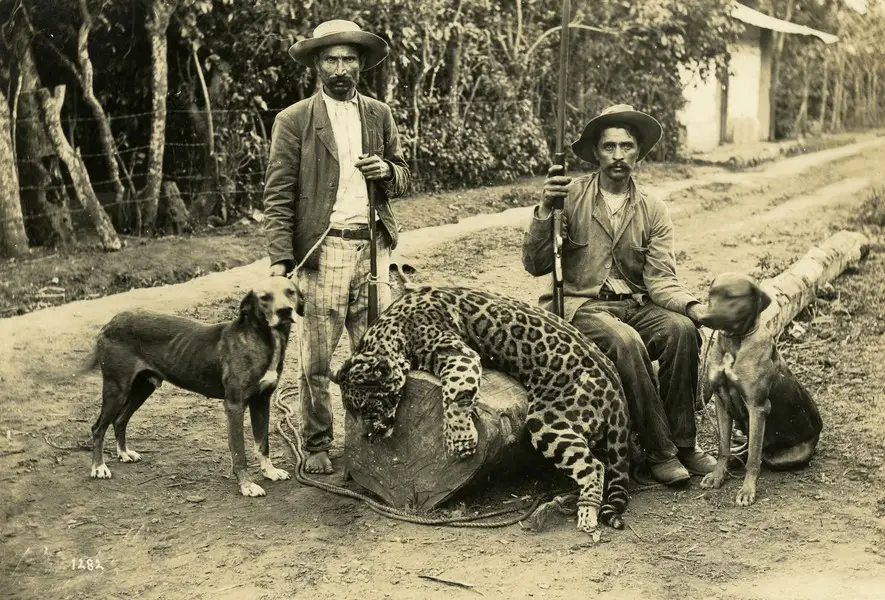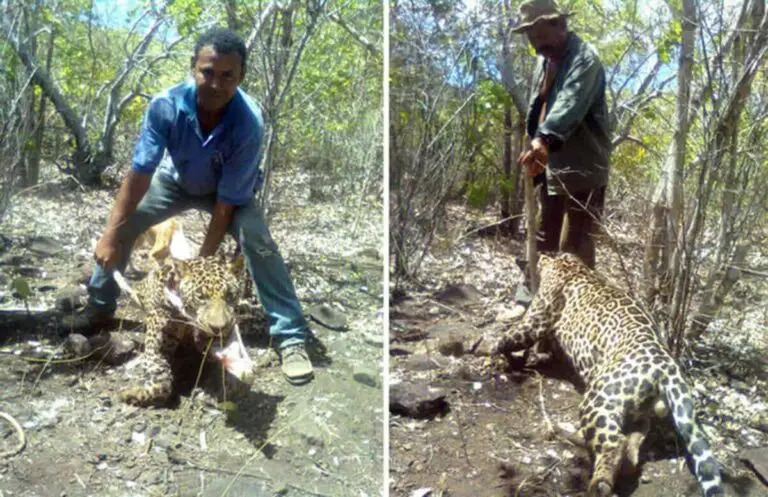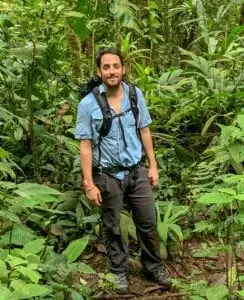Home » Conservation » A Peoples History Of Hunting In Costa Rica

Anyone who has spent time deep in the rainforest knows the complex and sometimes personal stories of the hunters or poachers. It is often easy to label, all hunters as villains. We must first put ourselves in these people’s shoes and understand that each event is typically separate from one another.
Visiting and spending time in any nation’s countryside, it becomes common knowledge that the heart of humility begins here. A simple life, an often romanticized life, overshadows the difficulty of everyday living. Travel back 50 or even 100 years ago and imagine a wild Costa Rica; not even national parks existed then. Herds of Collared Peccaries, Pacas, locally known as Tepesquinte, and even Giant Anteaters were common. It was not uncommon to see herds of 400 to 600 Peccaries all crossing a small stream at once. The jaguar numbers were healthy due to the food source and thick rainforest.
For a VERY rural community in the coastal areas of Limon and the southern region, hunting became the form of feeding the family and making an income. Early agriculture and cattle industry wiped out large herds of animals to make way for their farms. As time progressed and laws became enacted, hundreds of hunters were left with no other skill but to traipse the mountain and track the animals.
Now, nearly 25% of Costa Rica is protected by law, in the form of national parks, wildlife reserves, and other protected environments. They were also the first Latin American country to ever ban hunting as a sport. (3)
The citizens of Costa Rica became concerned and spoke up when they saw the decline of wildlife due to hunting and, more specifically, sport hunting. Their actions resulted in revamping the Wildlife Conservation law, the first of its kind, that now bans hunting in that country.
Gino Biamonte, president of the Association for the Preservation of Flora and Fauna (Apreflofas), stated, “It’s completely anti-democratic to allow an activity that goes against the good of most of the population [to benefit] the very few.”(1)
These actions diverted money that once supported a hunting tourism economy towards ecological tourism. The plan is to attract more environmentally conscious tourists to the country and discourage trophy hunters.
Prior to Apreflofas collecting 177,000 signatures to support the new wildlife management law, hunting was still allowed in unprotected areas.
It’s even been said that within the Tapanti National Park, a group of hunters blamed the disappearance of their dogs on a rare black jaguar, and in retaliation, the men killed the jaguar.
Historically, farmers killed larger predatory jungle cats (jaguars and pumas) to protect their livestock. Eduardo Carrillo, biologist and director of the International Institute of Conservation and Wildlife at the National University in Heredia states that “the conflict between cattle and jaguar has resulted in the greatest losses of the wild cats.” (2)
Jaguars wander into farmland not only to search for food, but they share a water source with the farmers, as rivers and streams run from forests to farmland. A rancher’s cow or pig may also wander into the forest and into harm’s way.
Current practices are more preventative in nature, such as electrified fences, motion-sensitive lights, and noisy donkeys. Farmers see this as a better alternative to paying large fines or risking imprisonment by violating the hunting laws governed by the Ministry of Environment and Energy.
Smaller farms are more at risk from jungle predators and are also less likely to have the money to take preventative measures. It seems that the government and conservationists value saving big cats for tourism instead of the plight of the small farmer. But those living in rural communities disagree.
Jaguars are not the only predator that attack farm animals. Pumas and coyotes are sometimes guilty, but farmers often assume it is a jaguar and will kill them if given the opportunity.
“Much of the reason that jaguars enter farms to attack cattle is because sport hunting has diminished their principal prey and sources of food in protected areas,” Carrillo said. “People kill the principal prey of the jaguars and it leaves them without sufficient food. As a result, they leave the protected areas and kill cows and pigs, which results in the jaguars being killed by farmers… In Costa Rica, it is the principal cause of decreasing population of jaguars.” (2)
Additional preventative measures to protect farm animals include providing a trough of water closer to the farm and having secure shelters for the animals at night. However, replacing a lost animal costs far more than taking preventative measures.
Corcovado National Park, set aside in 1975, is one of the last refuges for jaguars in Central America. It sits on the Osa Peninsula and encompasses nearly 43,000 hectares. The park has struggled with illegal hunting since its introduction.
Large-scale gold mining began in the 1820s but declined shortly after in the 1840s. In the 1930s, gold was discovered on the Osa Peninsula, and the rush was revived, spurring gold fever to sweep the country, only to slow once again.
During the 1970s, gold fever appeared again, and thousands of miners came to the peninsula. As the gold became harder to find, miners left. But those who stayed entered the park illegally to look for more gold. When the park was created, there was only a handful of people panning for gold inside its boundaries. By the mid-1980s, there were as many as 2,200. This put a burden on the local wildlife, as hunting was necessary to feed the masses.
Poachers also invade the Corcovado, hunting with AK-47s and specialized hunting dogs. They primarily hunted Paca and the endangered, white-lipped peccary and sold the meat. Using this method results in dozens of those species killed at a time. While jaguars may not be the main predator hunted, they rely on the Paca and peccary as their food. As their primary food source declines, only 30 remain in the park as of 2021. (4)
Today, many of the old hunting trails are used by tourists and wildlife authorities, and their knowledge has been passed down to wildlife guides. Many former hunters have seen the importance of conservation and even depend on ecotourism to sustain their families. This is not to say that poaching has gone extinct in Costa Rica. I had recently spent some time in the mountains with a man in his late 70s who, himself, was a former hunter. He told me stories that would amaze and infuriate anyone fighting for wildlife; some of the stories he told were first-hand experiences. Although the stories were almost 40 years ago, they still had an impact. While I was spending time with him, he received a message that someone had just killed 15 White Collared Peccaries. It was a young man in his mid-20s. The former poacher alerted authorities of the activity but did not reveal the young man’s identity for complex reasons. He further went on to tell me that a few restaurants still serve Paca (Tepesquinte) meat, but only by direct request.
And although hunting and poaching have had a complicated history in Costa Rica, it is headed in the right direction. Protecting lands has allowed much of the forests to return, so there is hope that the non-hunting laws may do the same for the wildlife. The introduction of more preventative practices by farmers and ranchers will reduce the number killed as well.
Grow Jungles has partnered with local individuals and groups to assist with camera traps and software to conduct one of the most comprehensive jaguar tracking studies in the southern Costa Rica region. More on this can be found at this link here: Golden Shadow, led by Tico Haroutiounian.
Since the release of this article, we have received notification about a couple of jaguars in the northeast region of Costa Rica. These jaguars are thought to have killed a baby calf. Tico Haroutiounian has taken the lead to inform authorities about the potential threat to these young jaguars. Here is a link to the jaguars crossing a river on the northeast side of the country.

*The picture above (1916) came from the UC Davis archive 1916.
*The second picture is from the 2013 incident.

Founder of Grow Jungles